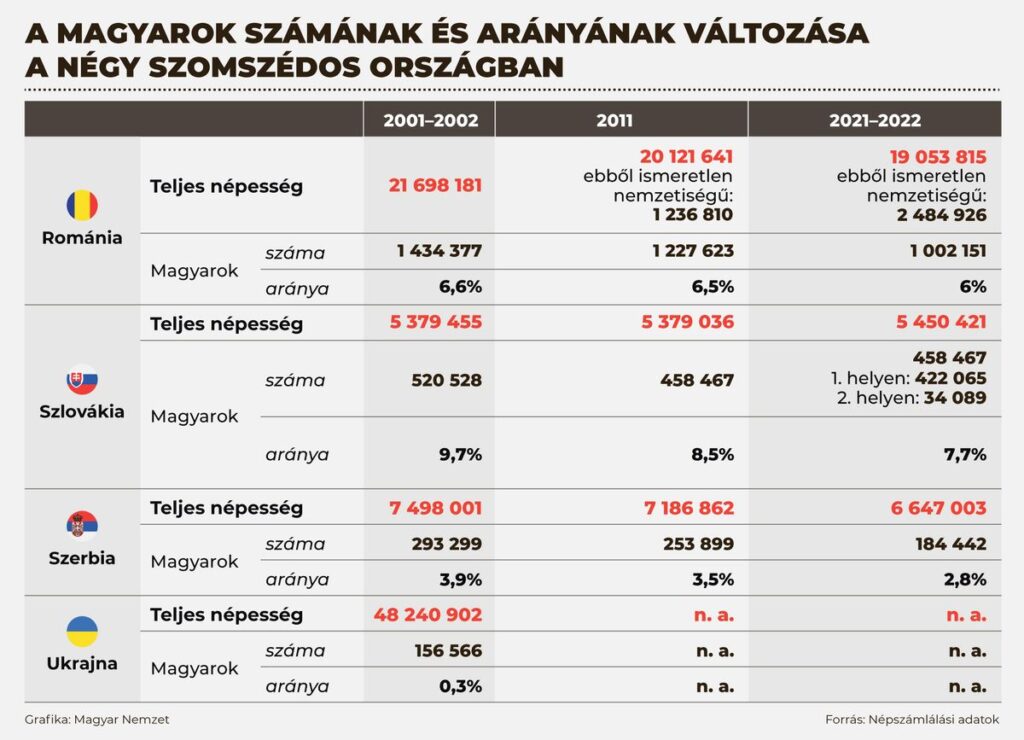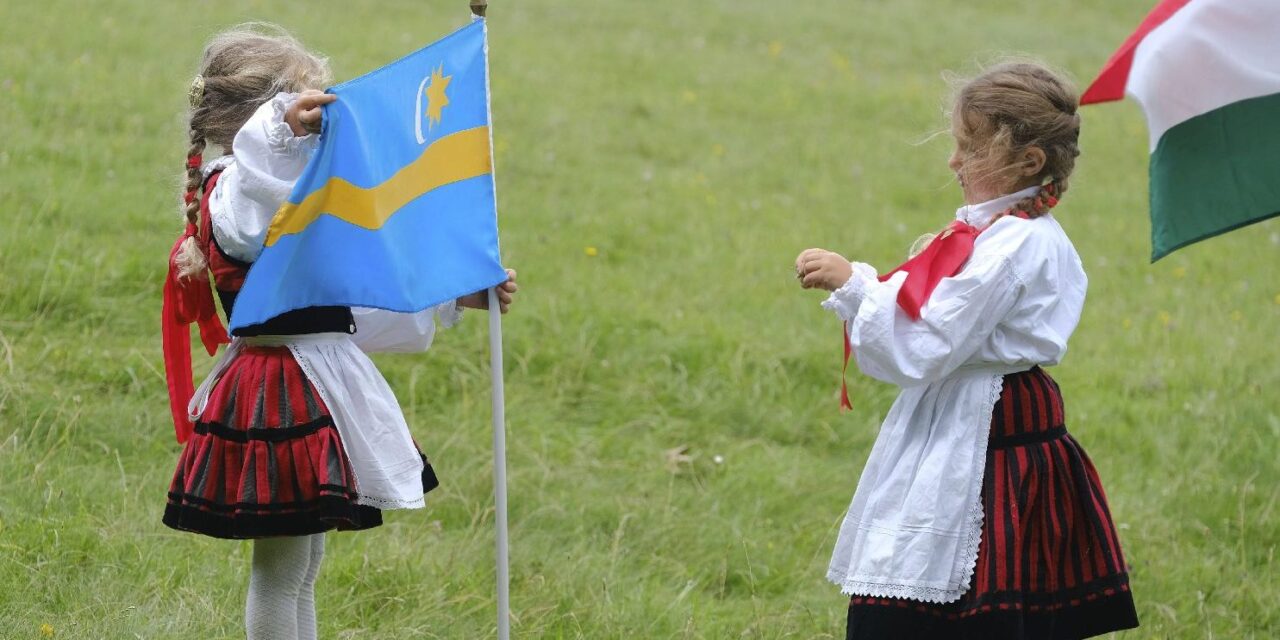There was a drastic decrease, and the trend will not change in the following years either.
The censuses of the countries neighboring Hungary in 2021-2022 only have final, detailed and processed data for Hungarians in the highlands - it is clear from the research of the Mária Kopp Institute for Population and Families (KINCS), the National Policy Research Institute and the Youth Research Institute, which on Thursday were presented in Tusványos. Settlement-level data have not yet been published in Romania and Serbia, and no census has been held in Ukraine since 2001. And none of the countries have yet published data so detailed that the latest trends in intermarriage can be examined.
At the same time, based on the results of the most recent censuses, the population of each foreign part of the nation decreased.
Since the regime change, the number of Transylvanian Hungarians has decreased by almost 40 percent, that of the Highlands by 20 percent, and that of Vojvodina Hungarians by almost 50 percent. Based on the unfavorable aging indices that can be observed everywhere, a downward trend in the number of Hungarians living abroad can be expected in the coming years as well.
The probable number of Hungarians in Transcarpathia was between 125,000 and 135,000 in 2017, as a result of the war, the population of Transcarpathian Hungarians staying at home decreased to around 100,000. Due to the unfavorable age of the Hungarian communities abroad, the population decline affected children and young people more markedly than the older age groups.

Comparing the fertility of the majority and minority Hungarian communities, it does not differ radically. With minor fluctuations in neighboring states, but
in terms of its tendency, the fertility rate has increased in the last decade, so the researchers assume that this happened in the same way in the case of Hungarians.
The small difference to the detriment of the minority - between the national average and the Hungarian average - can be explained by at least three factors.
- Children born in mixed marriages are registered as the majority nationality at a higher rate.
- In the 2011 (and 2021) censuses, the refusal to answer about nationality is relatively high. According to demographers, this has a distorting effect primarily in the case of minorities. In Romania, for example, the nationality data of 2.5 million inhabitants is missing.
- The aging index of Hungarians living abroad (it shows how many elderly people there are for every 100 children) is higher than the national average.
According to the estimates of the three institutes - based on the 2021-22 censuses and the SUMMA 2017 research - there are 262,000 Hungarian families in Transylvania, 112,500 in the Highlands, 52,000 in Vojvodina, and 35,000 in Transcarpathia. Based on similar estimates, 7,500 Hungarian children were born in Romania, 3,300 in Slovakia, 1,350 in Serbia, and 1,300 in Ukraine in 2021-22.
- Thus, in total, the births of approximately 13,500 children of Hungarian nationality were registered in the four indicated countries on average in recent years
he underlined.
They added that according to the censuses around 2011, this number was over fifteen thousand. - In Romania, 381,239 (ages 20-49), 172,180 (ages 19-49) in Slovakia, and 59,238 (ages 20-49) in Serbia belong to the 18-49 age group examined in the research - they wrote.
Source: Hungarian Nation
Cover image: Photo: MTI/Nándor Veres













